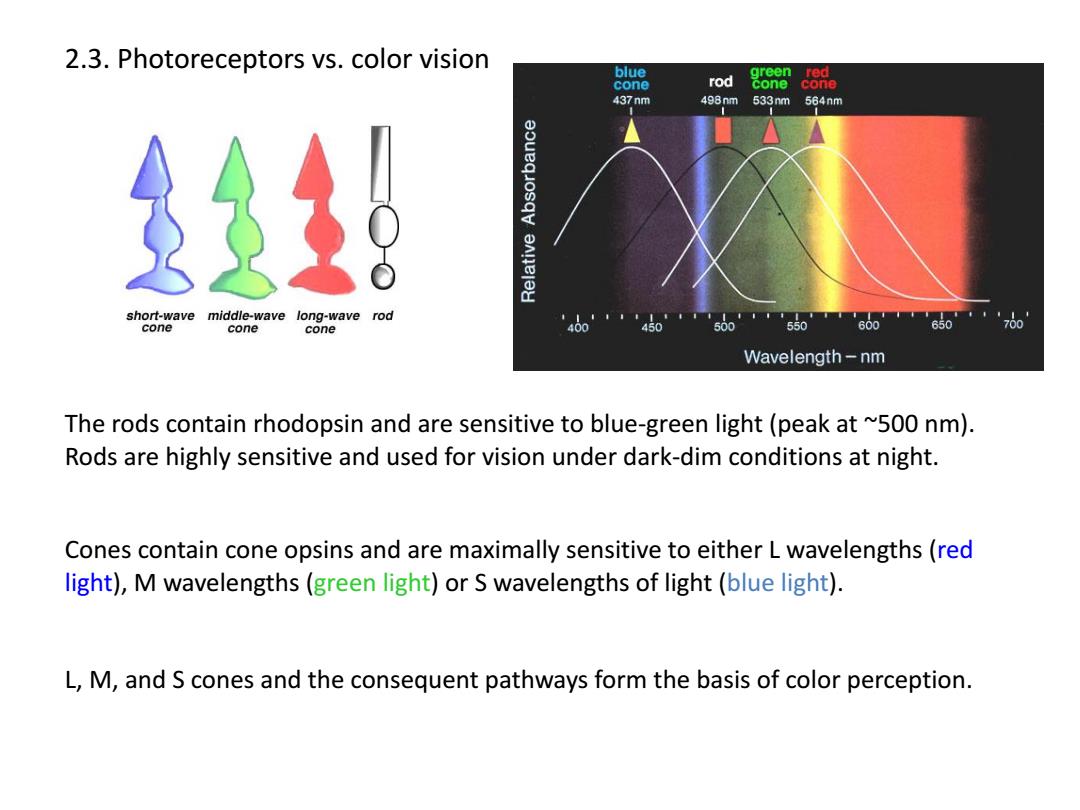
2.3.Photoreceptors vs.color vision blue green red cone rod conecone 437nm 498nm533nm564nm short-wave middle-wave long-wave rod cone cone 650 cone 700 Wavelength-nm The rods contain rhodopsin and are sensitive to blue-green light (peak at ~500 nm). Rods are highly sensitive and used for vision under dark-dim conditions at night. Cones contain cone opsins and are maximally sensitive to either L wavelengths(red light),M wavelengths(green light)or S wavelengths of light(blue light). L,M,and S cones and the consequent pathways form the basis of color perception
The rods contain rhodopsin and are sensitive to blue-green light (peak at ~500 nm). Rods are highly sensitive and used for vision under dark-dim conditions at night. 2.3. Photoreceptors vs. color vision Cones contain cone opsins and are maximally sensitive to either L wavelengths (red light), M wavelengths (green light) or S wavelengths of light (blue light). L, M, and S cones and the consequent pathways form the basis of color perception
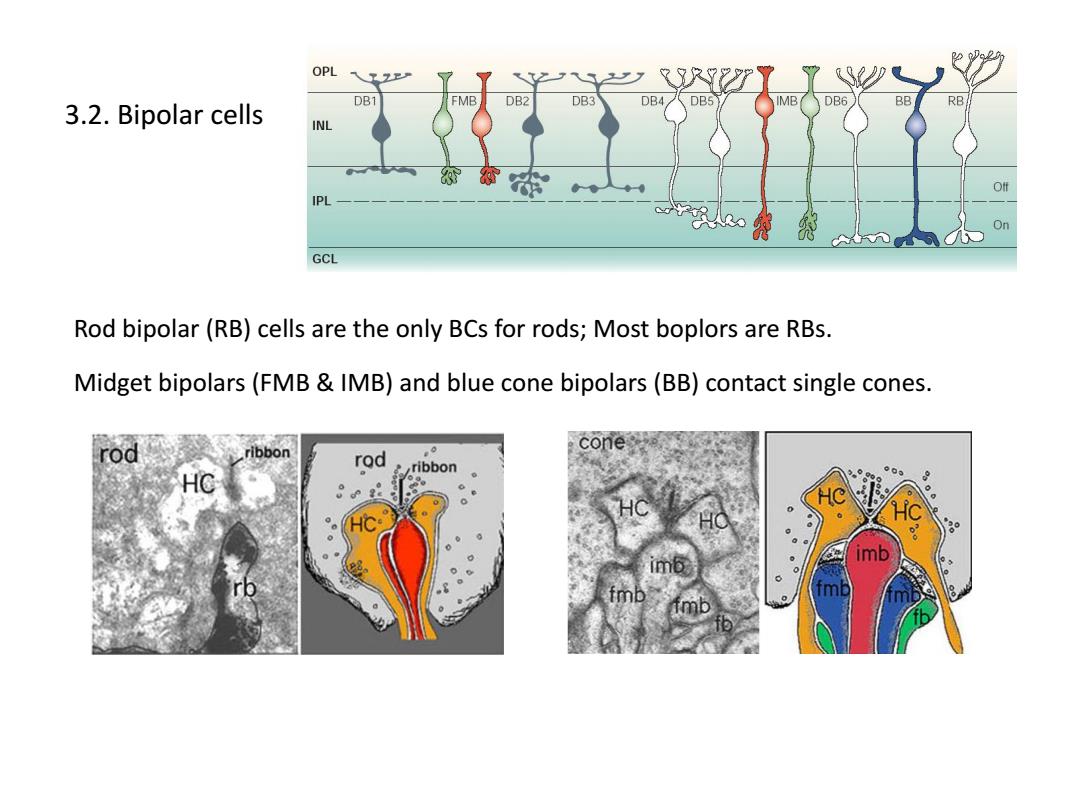
OPL DB1 FMB DB2 DB3 DB4 BB RB 3.2.Bipolar cells INL Off IPL On GCL Rod bipolar(RB)cells are the only BCs for rods;Most boplors are RBs. Midget bipolars(FMB IMB)and blue cone bipolars(BB)contact single cones. e cone bbon rod ribbon imb mb
3.2. Bipolar cells Rod bipolar (RB) cells are the only BCs for rods; Most boplors are RBs. Midget bipolars (FMB & IMB) and blue cone bipolars (BB) contact single cones
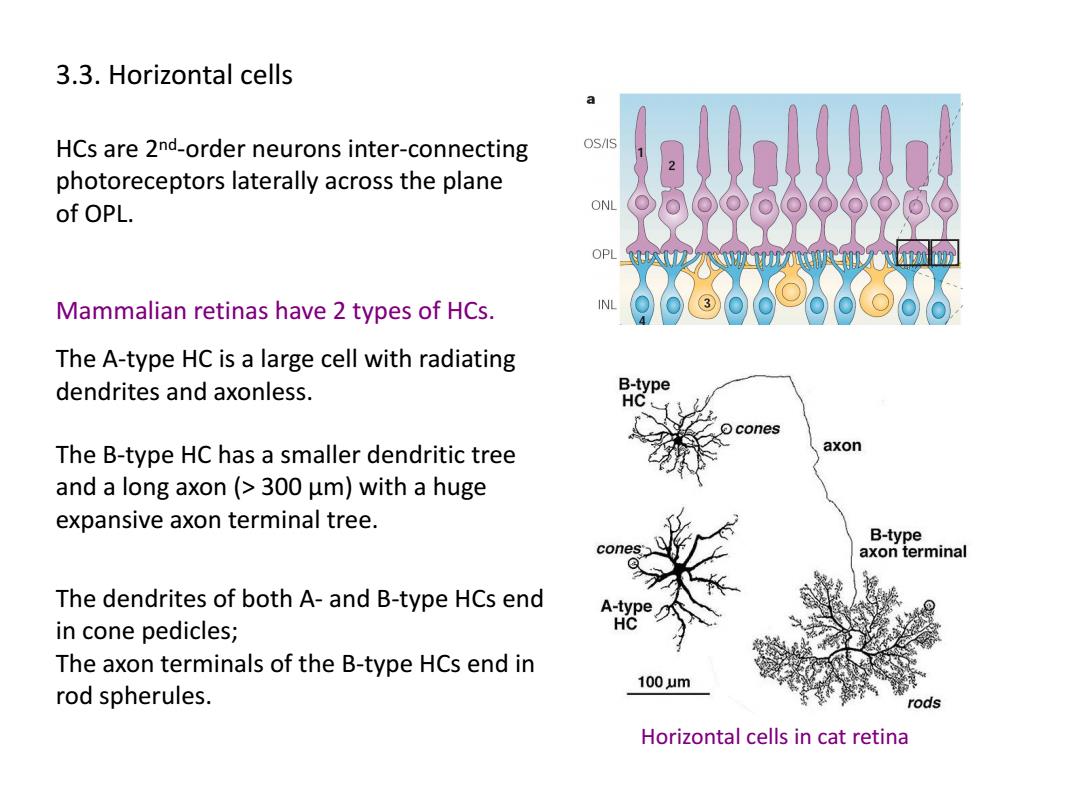
3.3.Horizontal cells HCs are 2nd-order neurons inter-connecting OS/IS 2 photoreceptors laterally across the plane of OPL. ONL oLN八wt0a0 rtu Mammalian retinas have 2 types of HCs. The A-type HC is a large cell with radiating dendrites and axonless. B-type HC cones The B-type HC has a smaller dendritic tree axon and a long axon(>300 um)with a huge expansive axon terminal tree. B-type con axon terminal The dendrites of both A-and B-type HCs end in cone pedicles; The axon terminals of the B-type HCs end in 100um rod spherules. rods Horizontal cells in cat retina
Mammalian retinas have 2 types of HCs. 3.3. Horizontal cells The A-type HC is a large cell with radiating dendrites and axonless. Horizontal cells in cat retina The B-type HC has a smaller dendritic tree and a long axon (> 300 µm) with a huge expansive axon terminal tree. The dendrites of both A- and B-type HCs end in cone pedicles; The axon terminals of the B-type HCs end in rod spherules. HCs are 2nd-order neurons inter-connecting photoreceptors laterally across the plane of OPL
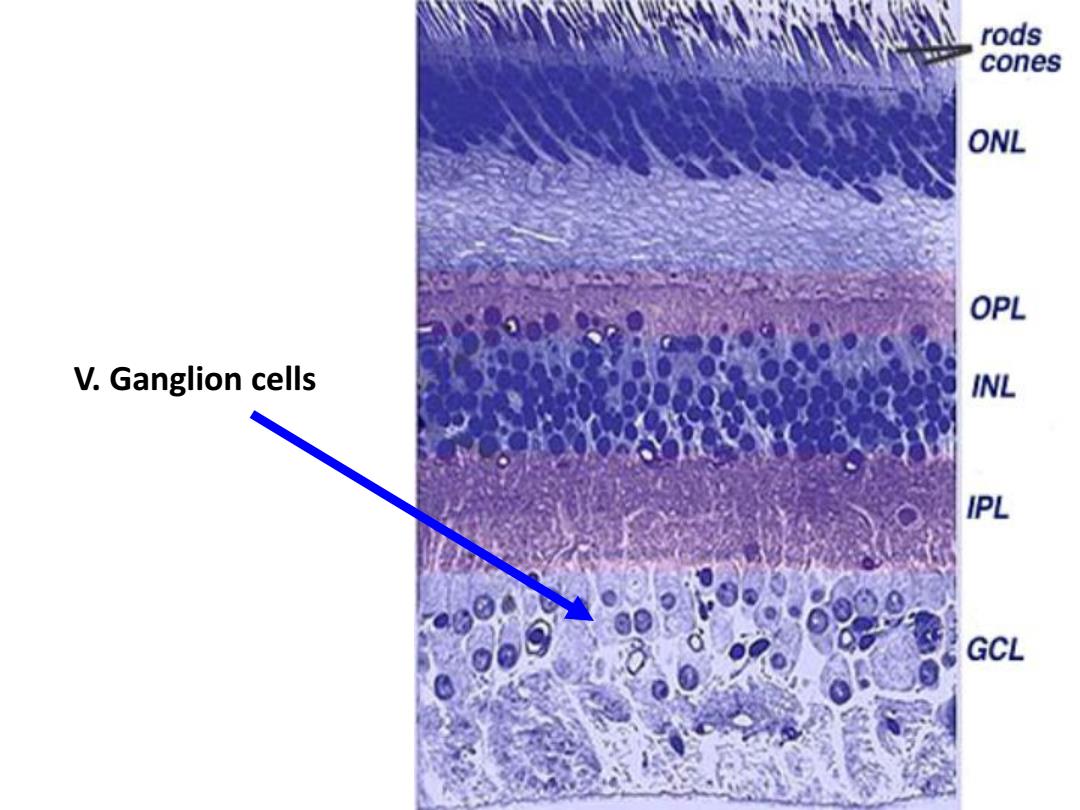
rods cones ONL OPL V.Ganglion cells L IPL GCL
V. Ganglion cells
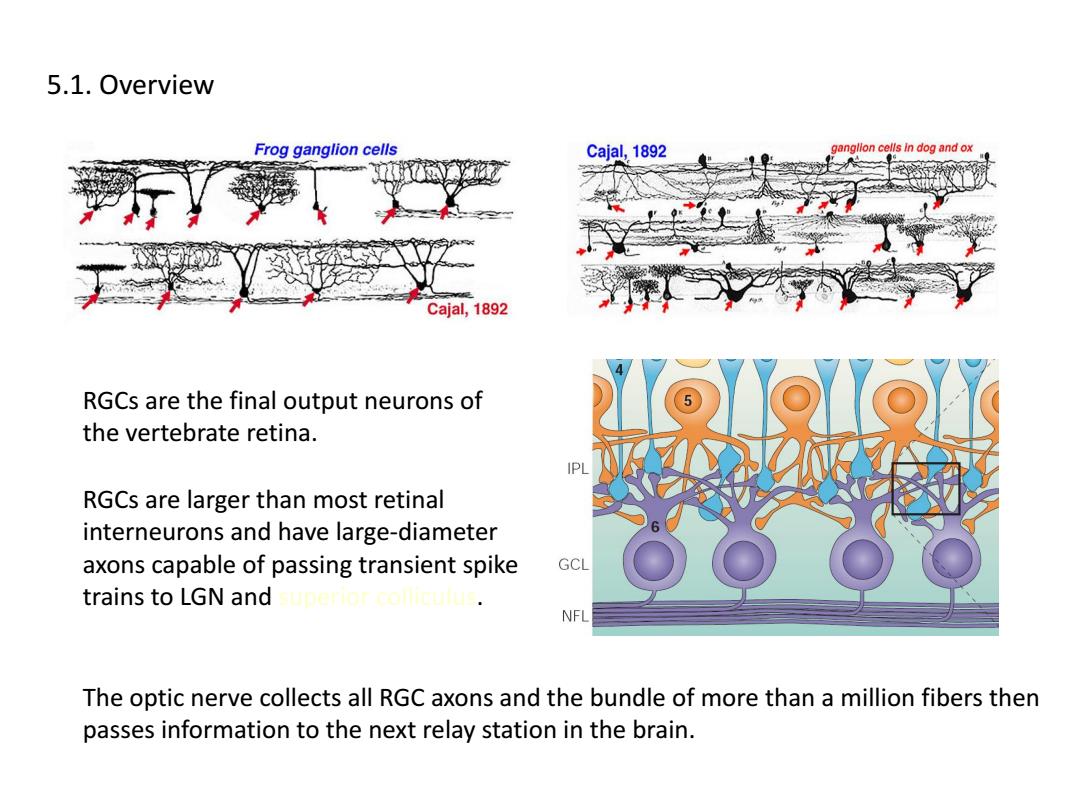
5.1.Overview Frog ganglion cells Cajal,1892 ganglion cells in dog and ox Cajal,1892 RGCs are the final output neurons of IooTo the vertebrate retina. RGCs are larger than most retinal interneurons and have large-diameter axons capable of passing transient spike GCL trains to LGN and. NFL The optic nerve collects all RGC axons and the bundle of more than a million fibers then passes information to the next relay station in the brain
RGCs are the final output neurons of the vertebrate retina. RGCs are larger than most retinal interneurons and have large-diameter axons capable of passing transient spike trains to LGN and superior colliculus. The optic nerve collects all RGC axons and the bundle of more than a million fibers then passes information to the next relay station in the brain. 5.1. Overview